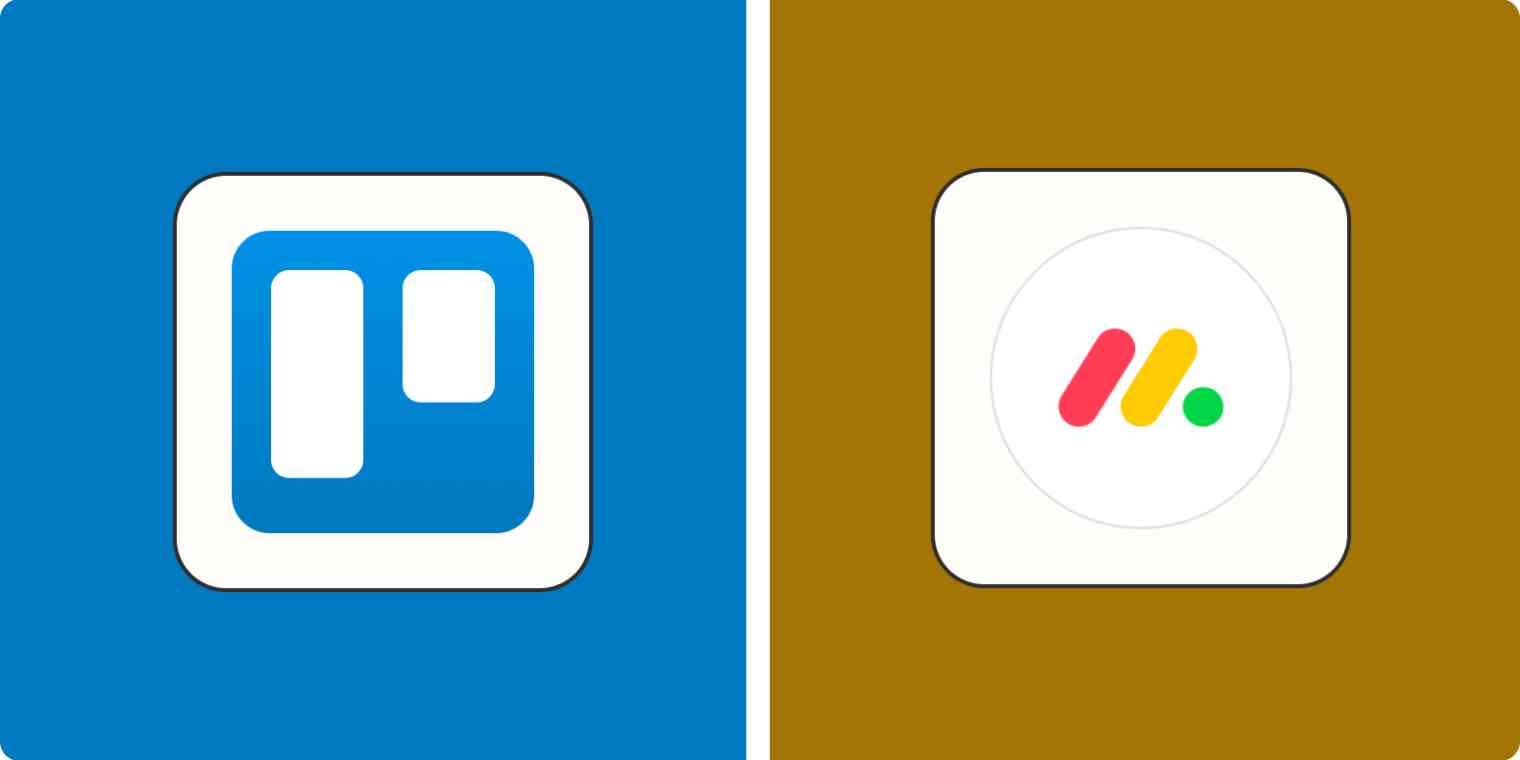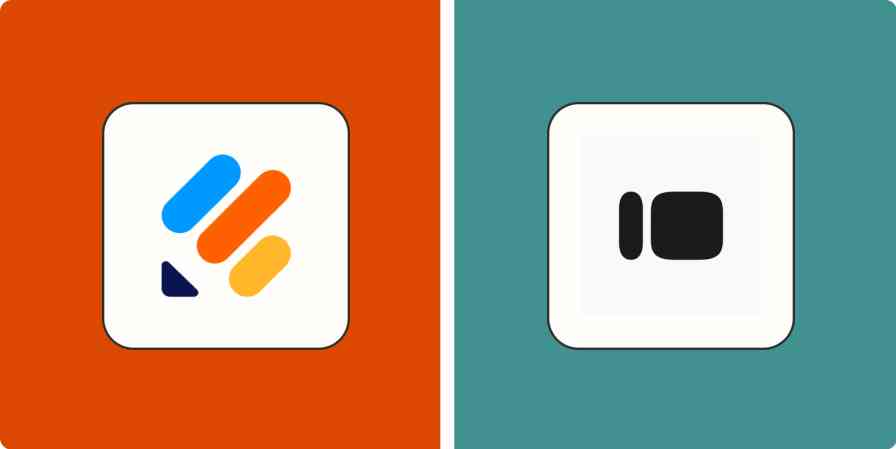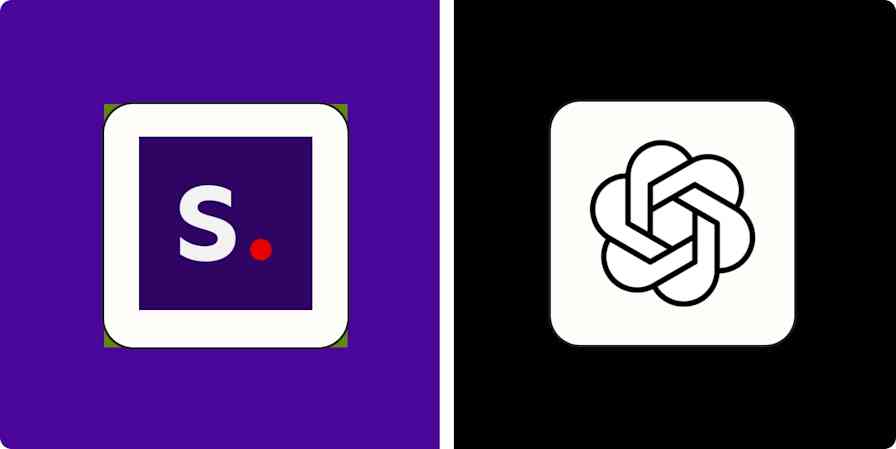Trello and monday.com each pack a unique punch in the project management ring.
Trello, with its streamlined Kanban-based system, feels like organizing your tasks with sticky notes on a digital wall: intuitive, straightforward, and oddly satisfying. It's like that chill friend who's always up for a coffee run and somehow manages to keep everything organized with a smile.
On the other side, we've got monday, the all-in-one powerhouse that's all about customization and flexibility. It's like the friend who color-codes everything and has a spreadsheet for their spreadsheets.
I've been a Trello user for years, and recently got around to testing monday.com's premium plan to see what the hype is all about. What I found is that these are two powerful PM tools, but they're designed for two slightly different audiences.
Whether you're a fan of simplicity or uber-customization, there's a lot to unpack here. Let's get into it and find out which one is right for your team.
Trello vs. monday at a glance
Here's a quick comparison table to highlight the main differences between Trello and monday, but keep reading for details about the various features and my experience using each platform. Or you can skip to the end for a quick summary of which project management tool will be best for you.
| Trello | monday |
|---|---|---|
Views | ⭐⭐⭐⭐ Kanban king, but limited number of other views | ⭐⭐⭐⭐⭐ Many ways to view data, though some are locked behind higher price tiers |
Ease of use | ⭐⭐⭐⭐⭐ Out-of-the-box, get-started-and-go ease; simple interface | ⭐⭐ Steep learning curve and overwhelmingly customizable interface, but feature-rich |
Customization | ⭐⭐⭐ Custom fields offer a certain degree of flexibility, but leaves room for more | ⭐⭐⭐⭐⭐ Customize almost everything about your projects |
Dashboards | ⭐⭐⭐ View critical info like cards per list and cards per member | ⭐⭐⭐⭐⭐ Super customizable visual project dashboards |
Pricing | ⭐⭐⭐⭐⭐ Has a free-forever plan; paid plans starts at $5/user/month | ⭐⭐⭐ Free 14-day trial; plans start at $9/user/month |
Time management | ⭐⭐⭐ Has due dates for cards and tasks; time tracking available through third-party integrations | ⭐⭐⭐⭐⭐ Built-in time tracking, with timelines and capacity planning features to make sure you don't miss any deadlines |
Extra features | ⭐⭐⭐ Power-Ups give you access to a lot of extra options across software categories | ⭐⭐⭐⭐⭐ monday bills itself as a Work OS and it shows with features like portfolio management; also has CRM and development tracking products |
monday.com has more advanced features for teams
monday.com bills its project management tool as a Work OS (operating system), and I find that branding to hold true. It's an all-in-one powerhouse of an app, organizing everything your team could possibly want to organize, no matter how complex. It's like a Swiss Army knife, but less dangerous.
For example, monday has built-in capacity planning, which is perfect for teams that need to balance workloads and allocate resources effectively. Imagine being able to see, at a glance, who's swamped with tasks and who's itching for more work—it gives you a birds-eye view of your team's bandwidth.

monday also has built-in time tracking, so you can log the effort expected and actual effort spent on each task. The feature isn't about Big Brothering your team's hours; it's about gaining insight into how much time different tasks actually take, helping you plan projects more accurately in the future. It's also a fantastic way to identify processes that could be streamlined, or tasks that are taking longer than expected.

In the end, monday is all about workflow optimization and portfolio management (in addition to standard project management). That makes it a great fit for bigger teams that have lots of projects up in the air at once, but not a good fit for smaller teams that don't necessarily need a high level of detail in their project tracking.
One last thing: besides its Work OS project management tool, the platform also offers a sales CRM and product development tracking tool. I'm not going to dig into those here, but it's a good indication of the breadth of the software when compared to Trello.
Trello is easier to use
Trello is the embodiment of simplicity. With its Kanban board-based layout, adding tasks feels as natural as pinning a note to the fridge. Each board represents a project, and within each board, you create lists to categorize stages of your project. Then, you add cards to these lists to represent your individual tasks.
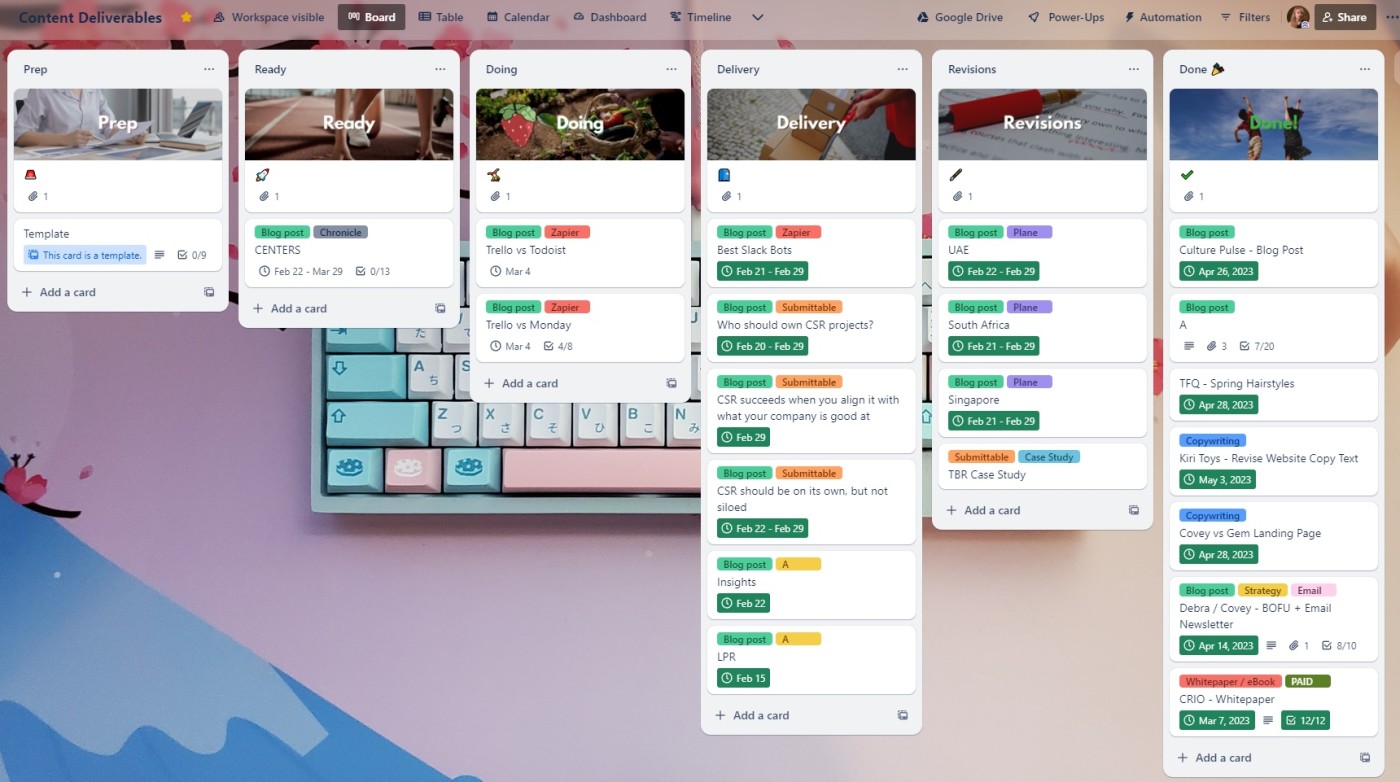
Navigating Trello feels like playing with digital LEGO bricks: you can view your colorful labels at a glance, move the pieces around with ease, and get a sense of accomplishment when you drag tasks to the "Done" column. It's so easy, a kid could do it. (I know because I've actually shown a kid my Trello board before.)
Trello's lack of learning curve is its greatest feature. No need to wade through complicated menus or wonder how to add a task—the buttons are all right there, intuitive, and hassle-free.
Meanwhile, monday is a bit of a head-scratcher to navigate, especially when you first dig in. You have to tweak all the columns to your needs, which creates new views, and you have to manually designate which are your "Done" statuses. Its interface can get a bit cluttered with tasks, so you have to use filters and sections to break everything up.

On monday.com, you can only have one level of subtasks, and you can't copy subtasks to other tasks.
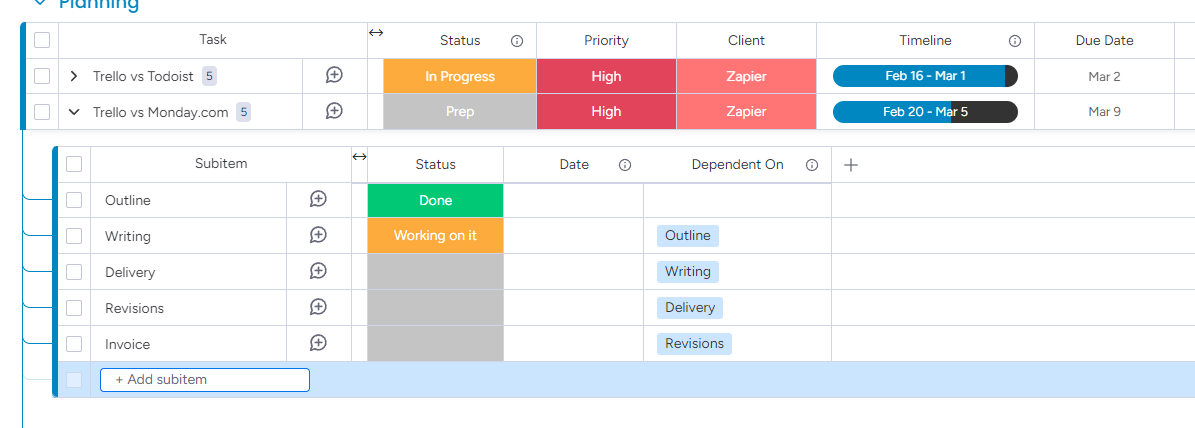
Trello also has the same subtask limitation, but you can copy checklists from one card to another as easily as selecting a dropdown menu.
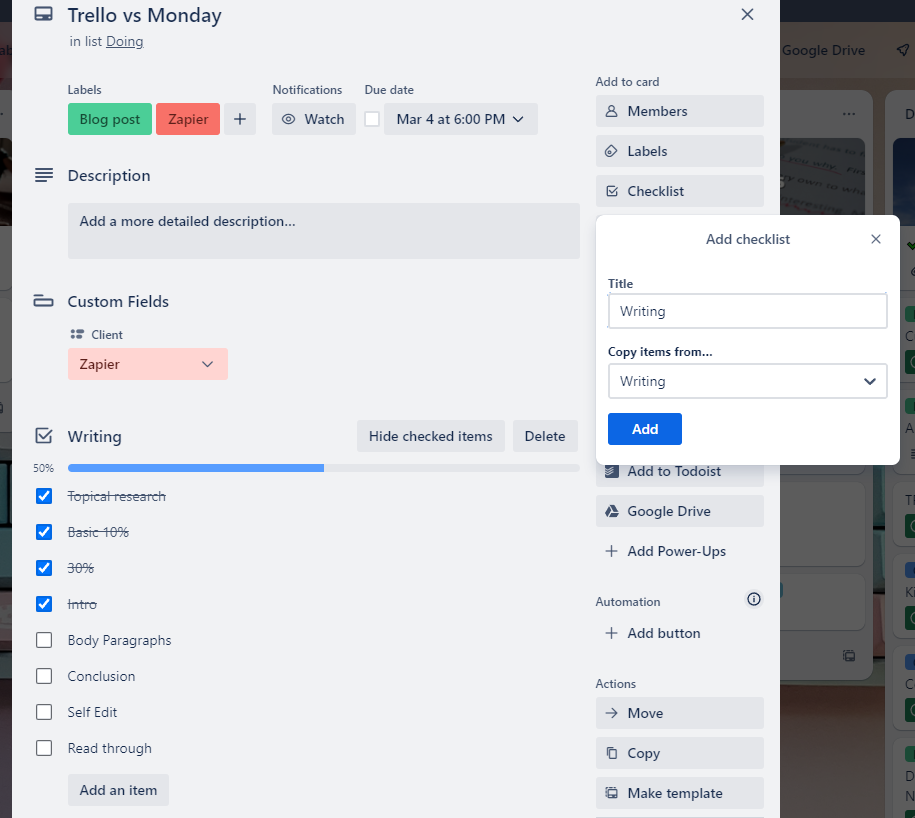
monday isn't the most difficult platform to learn, but it's certainly not as straightforward as Trello. If you're looking for more of a plug-and-play solution, or have a team that doesn't do well with learning new tech, Trello is your best bet.
monday is more customizable
monday might be a bit more difficult to pick up, but therein lies one of its strengths: its unparalleled level of customization. You can tailor monday to fit your team's unique workflow, no matter how complex it is.
One of monday's claims to fame is its plethora of views. Whether you're a visual thinker who loves seeing tasks laid out on a timeline or a detail-oriented planner who prefers the precision of a spreadsheet, monday has you covered. The platform offers a variety of views, including Kanban boards for those who love Trello's distinctive interface, Gantt charts for detailed project planning, calendar views for deadline-based tasks, and even workload views for managing team capacity. Each view can be customized and saved, ensuring that every team member can work and plan in the way that suits them best.
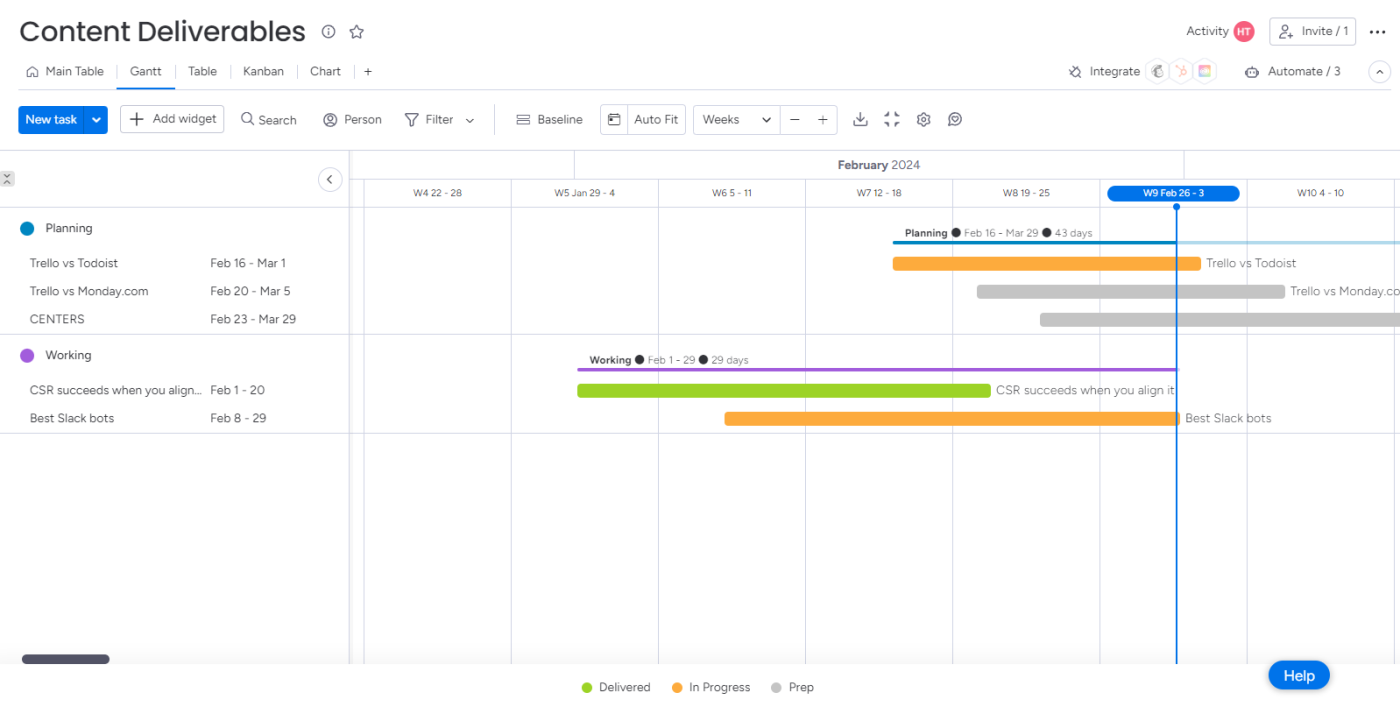
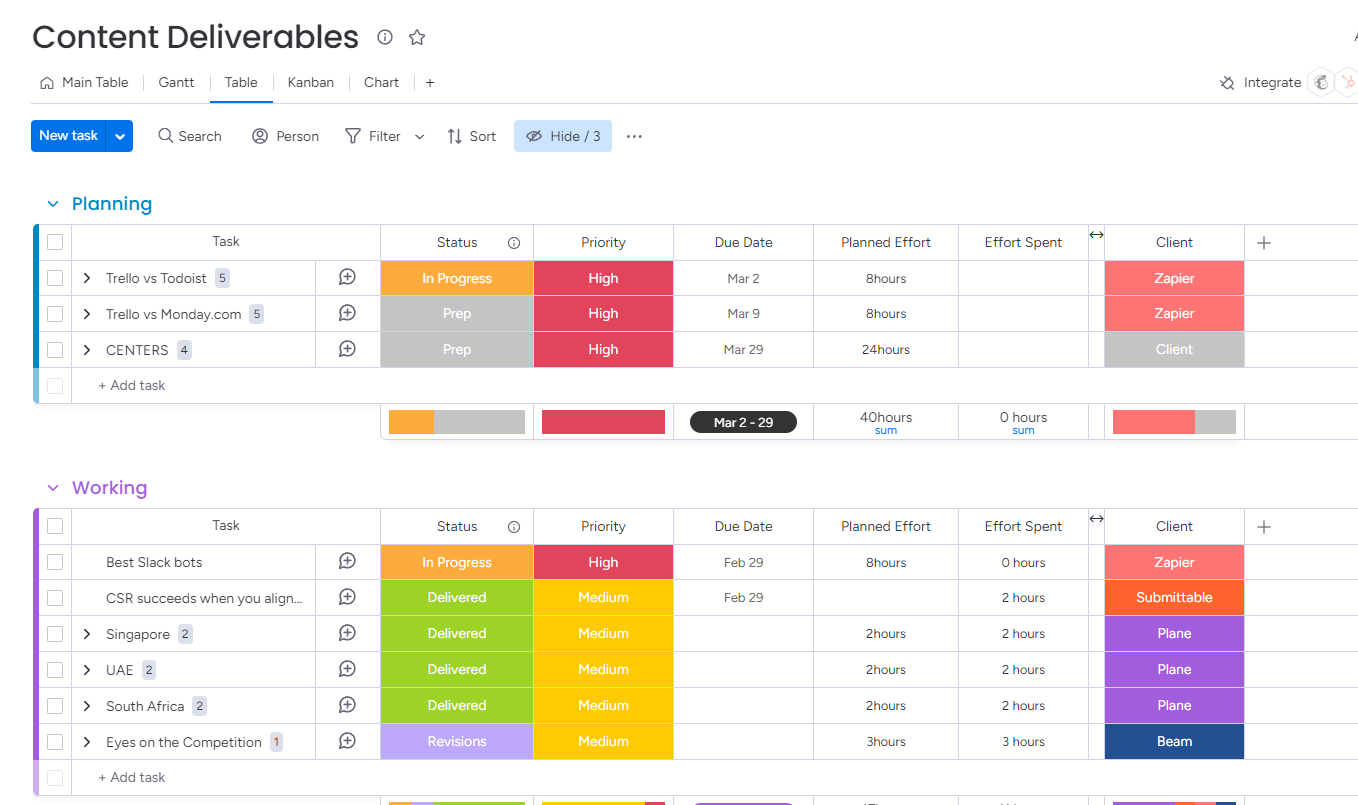
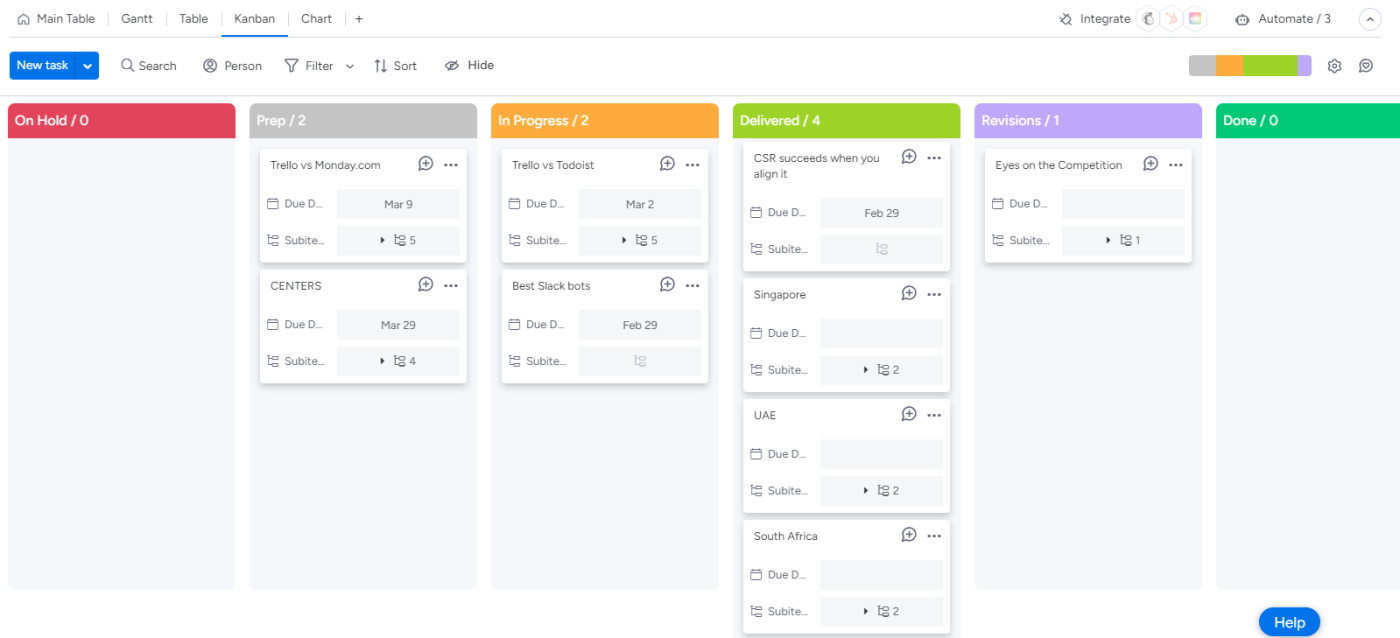
monday's dashboards also stand out, aggregating data and metrics across all your projects onto one clean visual interface.
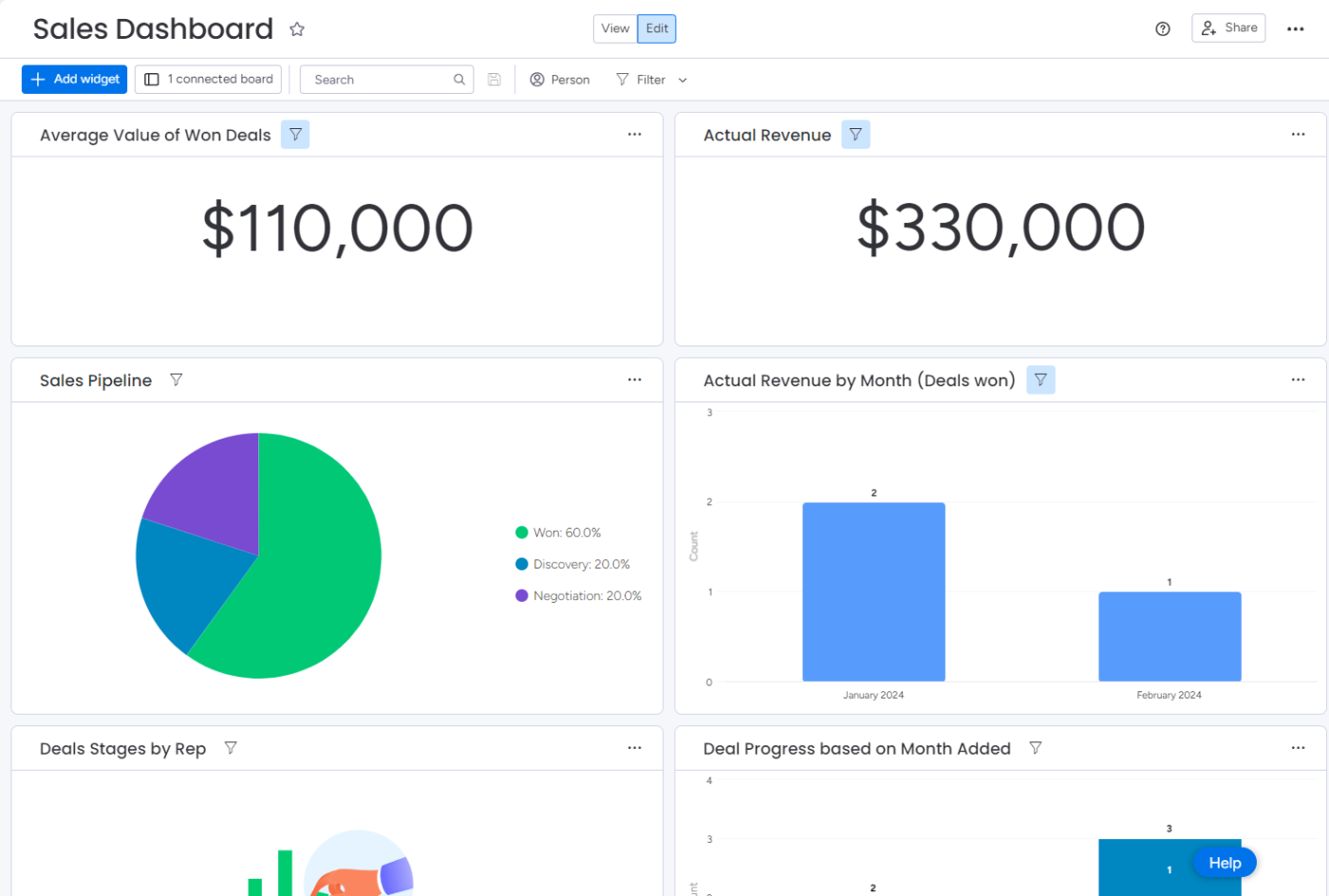
Meanwhile, Trello's "dashboard" view is extremely simple: it only tells you how many cards you have per list, due date, and label, and that's about it—even if you have the more premium plan.
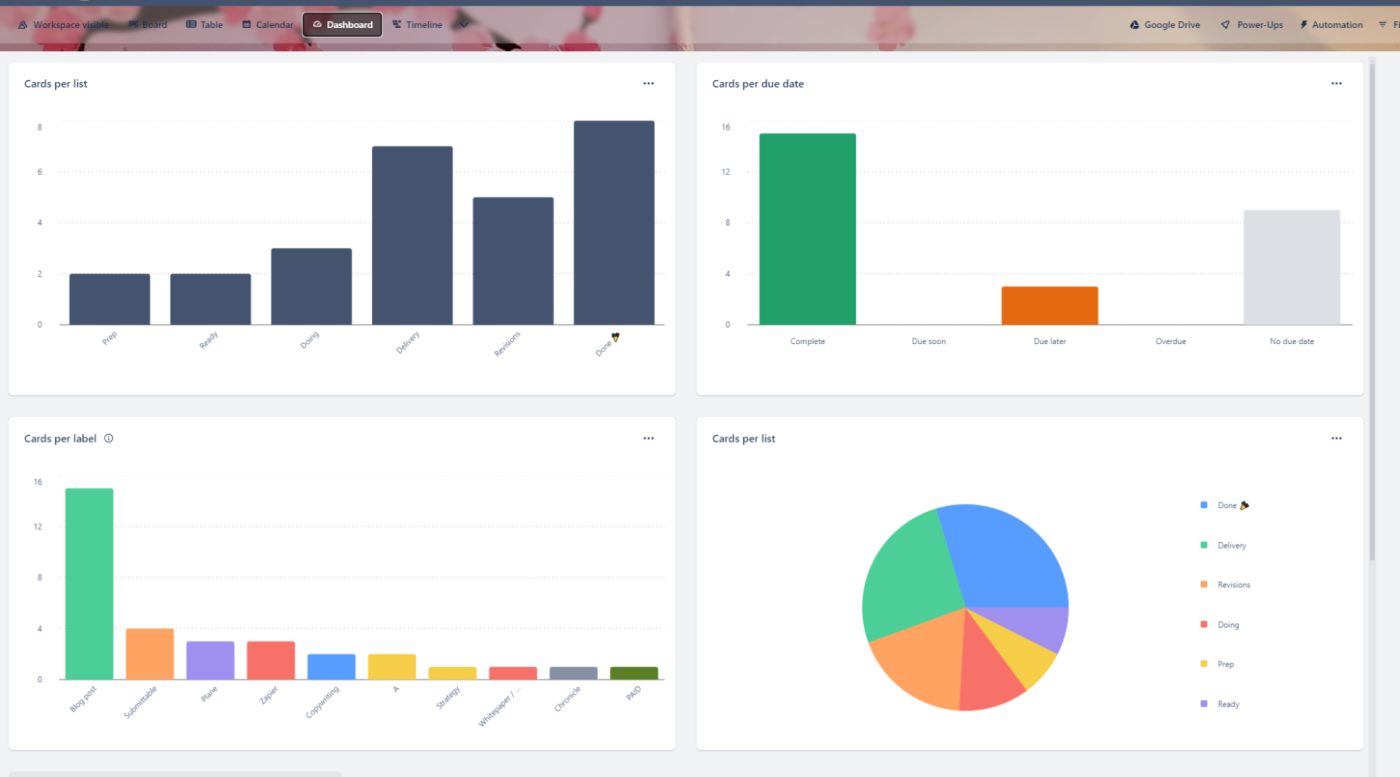
One important thing: while monday offers deep customization options, some of these more advanced views and features are gated behind higher price tiers. This means that access to the full power of monday's customization capabilities might require stepping up to a more premium subscription.
Still, the ability to tailor the platform extensively to your team's needs is a compelling reason to choose it. The flexibility allows you to create a truly bespoke project management experience that can evolve with your team.
Trello has a freemium plan; monday is paid-only
If cost is a factor for you, you'll definitely want to know that Trello has a forever-free plan, while monday is paid-only (with a free 14-day trial to start out).
Trello's freemium model is like the ultimate appetizer platter: generous, satisfying, and designed to give you a real taste of what's on offer. You can create up to 10 boards, with unlimited lists and cards, invite team members to collaborate, and even integrate with a handful of other apps—all without spending a dime. It's perfect for individuals and small teams who are looking for an effective way to manage projects without committing to a monthly subscription.
If you do opt for a subscription, Trello starts at $5/user/month for unlimited boards and storage, with custom fields and 1,000 workspace command runs per month, and goes up to $10/user to add on its views and unlimited command runs. Its accessible pricing, plus forever-free plan, makes Trello a budget-friendly project management tool.
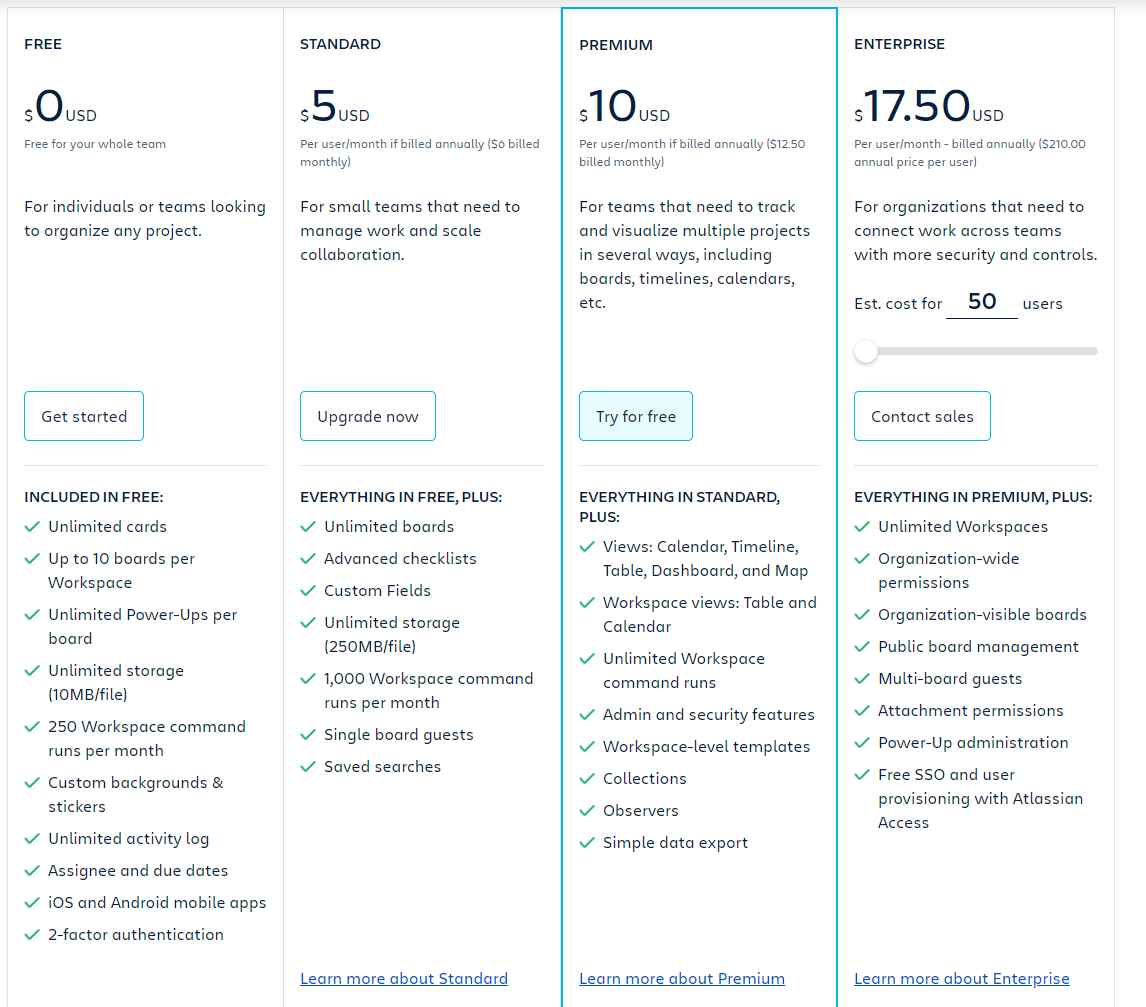
On the flip side, monday takes a clear-cut approach to its pricing: if you want in, there's a price tag. That price tag is $9/user/month for its cheapest Basic plan; $12 for its Standard plan with automations, integrations, and more views; and $19 for its Pro plan, which includes the time tracking feature. It's pricier, but it also signals the company's commitment to providing a robust, feature-rich platform for serious teams ready to invest in their project management solution.
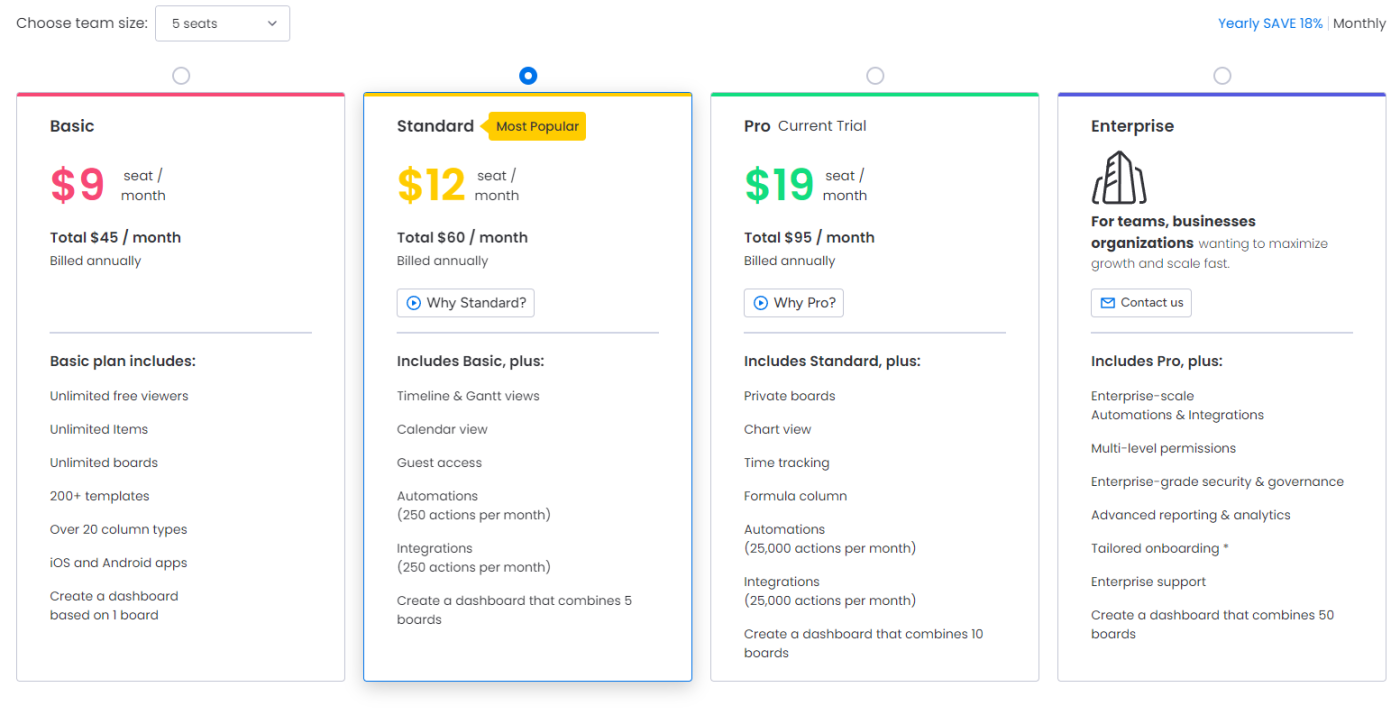
You can tell just by their pricing models who each tool speaks to. Trello opens its doors wide, welcoming anyone and everyone to organize their projects, whether they have the funds to shell out or not. monday, meanwhile, aims to attract a crowd ready to dive deep, offering a suite of advanced features that cater to teams looking for a comprehensive, all-in-one project management solution. Truly, monday.com is for those seeking a complete Work OS.
Both apps integrate with Zapier
Both apps offer plenty of native integrations—you can access them on Trello's free plan and monday.com's Standard plan.
And because both Trello and monday integrate with Zapier, you'll be able to connect them both with thousands of other tools as well. Learn more about how to automate Trello and how to automate monday.com, or get started with one of these pre-made workflows.
Create new Trello cards from new Google Calendar events
Create Trello cards from new Google Forms responses
Create items on a monday.com board for new rows on Google Sheets
Add items in monday.com for new invitees created in Calendly
Zapier is a no-code automation tool that lets you connect your apps into automated workflows, so that every person and every business can move forward at growth speed. Learn more about how it works.
monday vs. Trello: Which is best?
Trello offers a no-cost way to get organized, making it an attractive option for those just starting out or managing smaller projects. monday.com, with its focus on a feature-rich experience, appeals to established teams willing to invest in a powerful tool that can streamline their workflows and boost productivity.
Choose Trello if:
You want a cleaner, simpler interface that's intuitive to navigate with drag-and-drop ease
You don't have a lot of time to set up and train your team on how to use a new tool
Your budget is $0
You're a freelancer, startup, or small team looking to keep costs down
Choose monday.com if:
You want to visualize your projects in many different ways
You need to see important metrics and capacity planning for your team on dashboards at a glance
You want a more robust, ultra-customizable tool
Your team and its projects are scaling rapidly
So, what do you need most: simplicity or power? Both platforms bring their A-game to the project management table, but they cater to different crowds with unique needs, workflows, and priorities.
Related reading:
